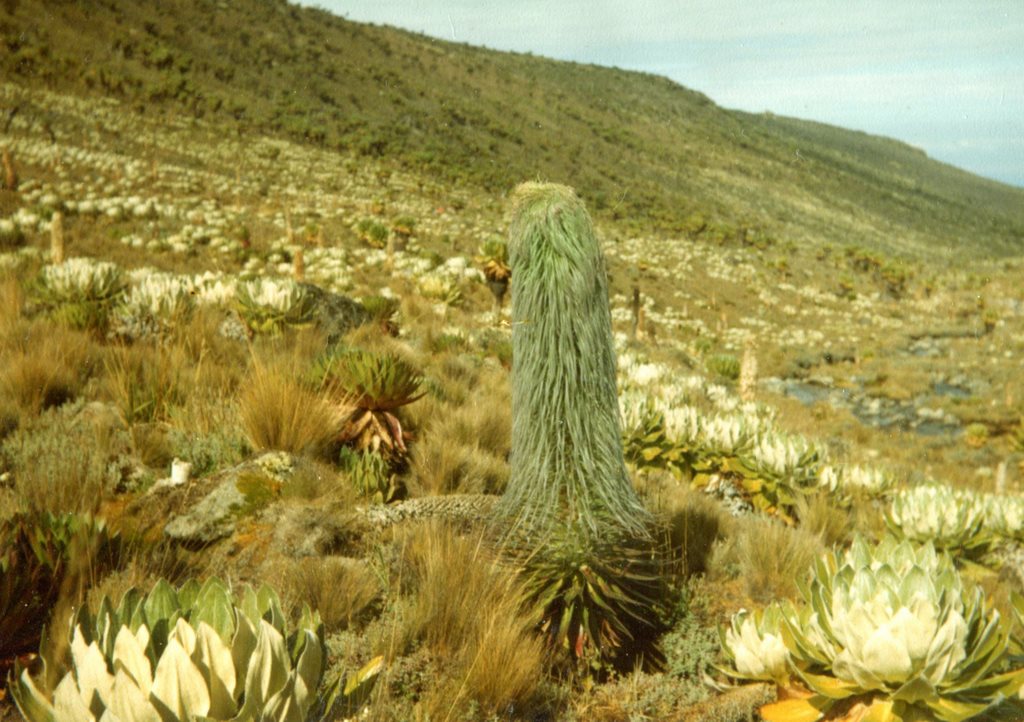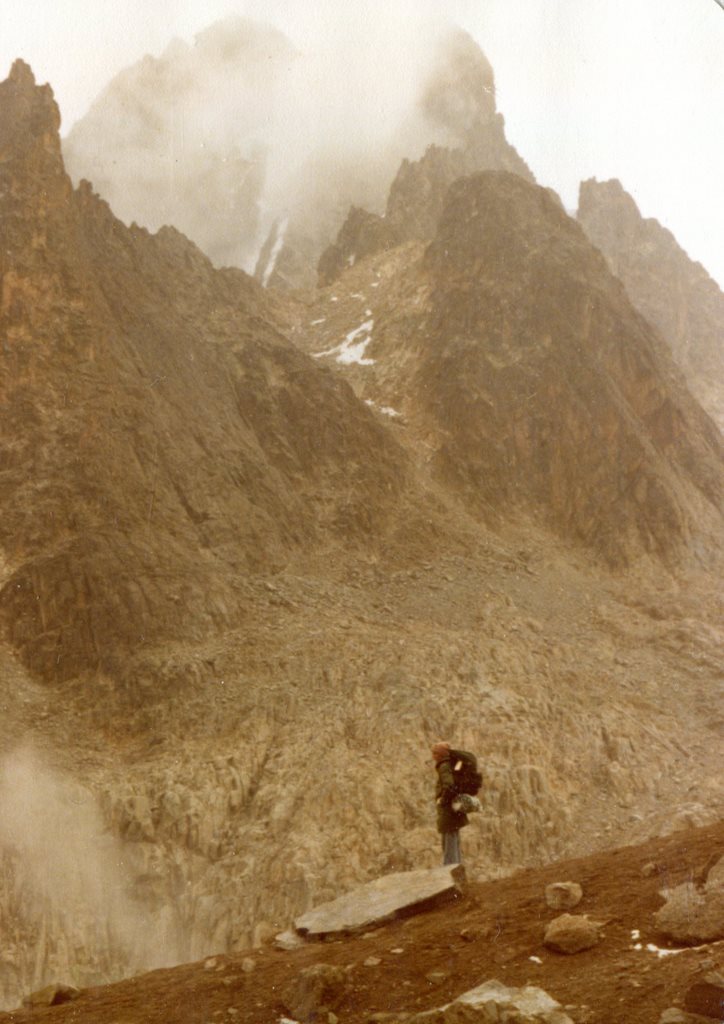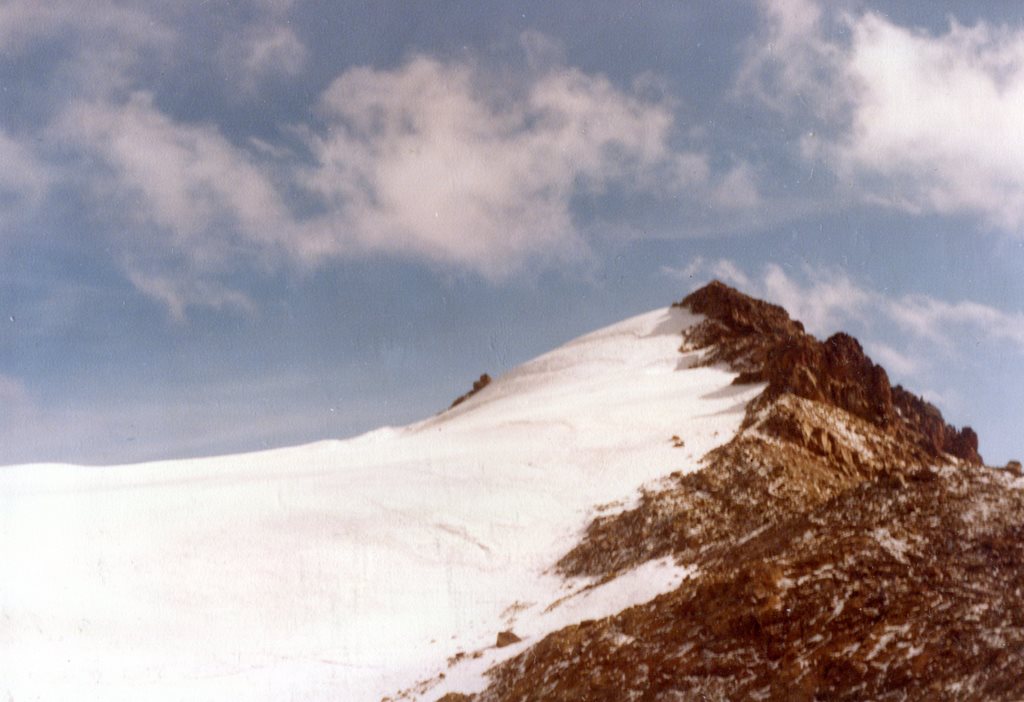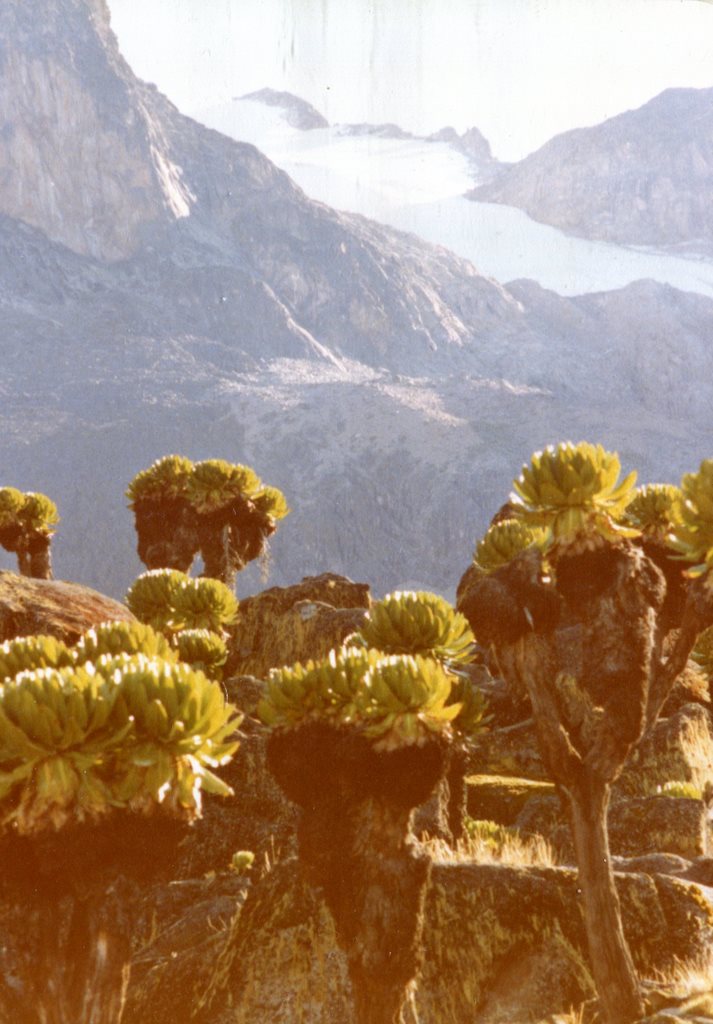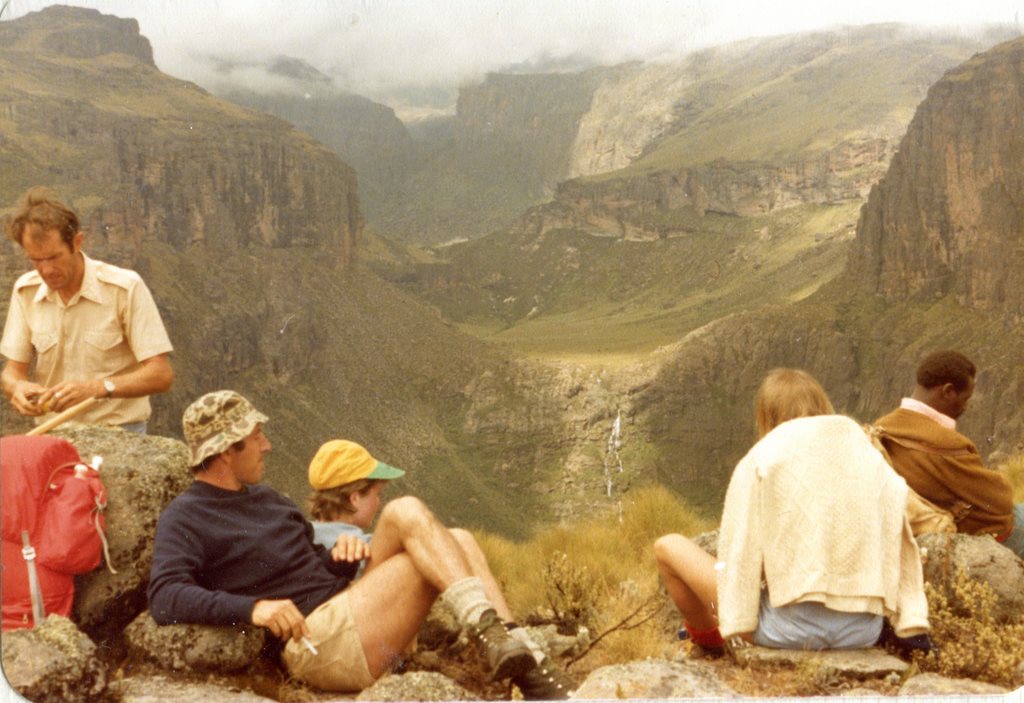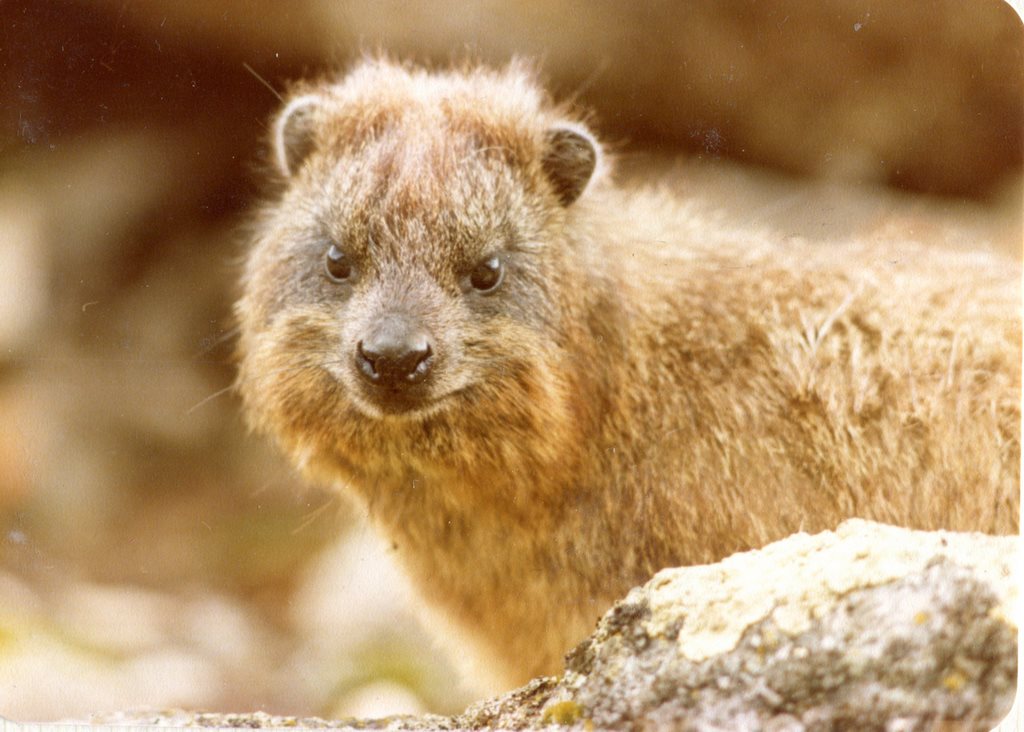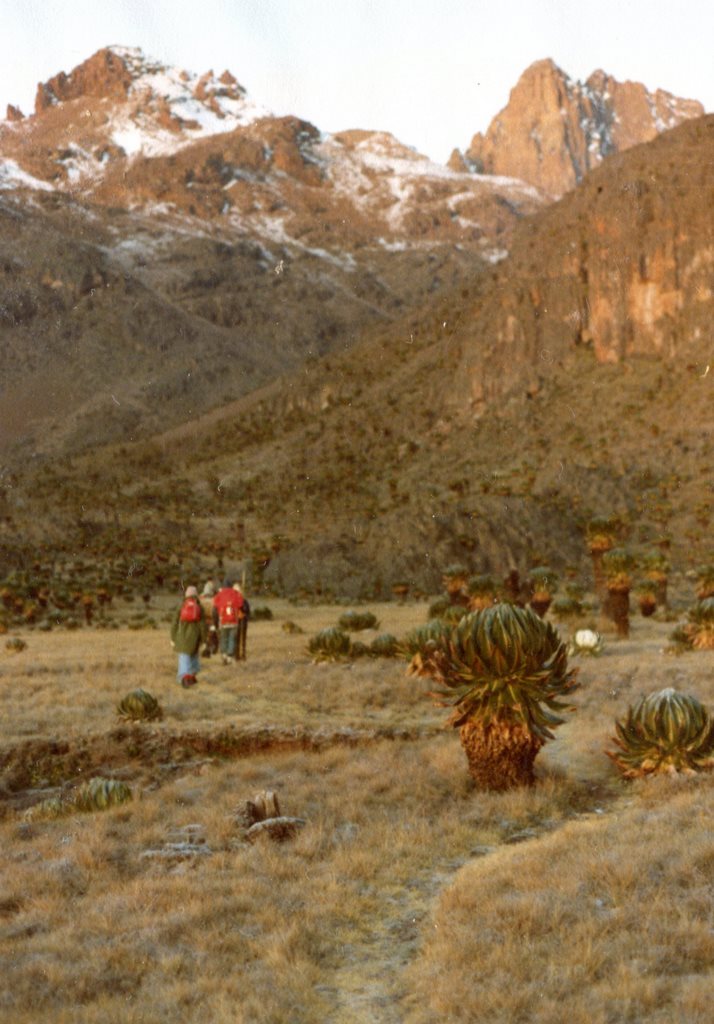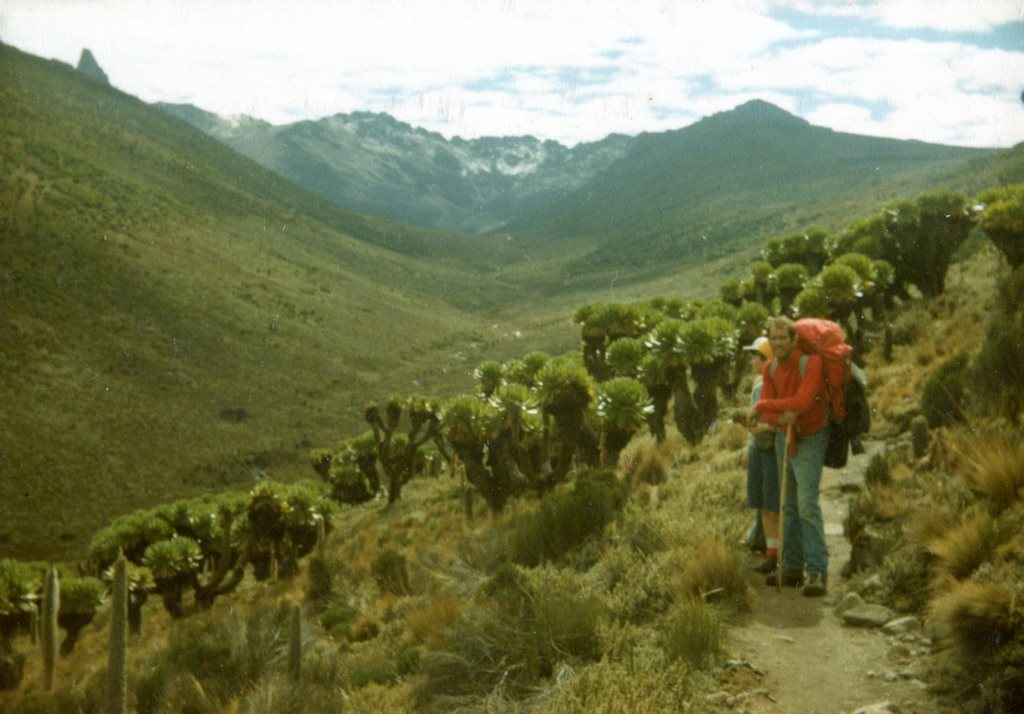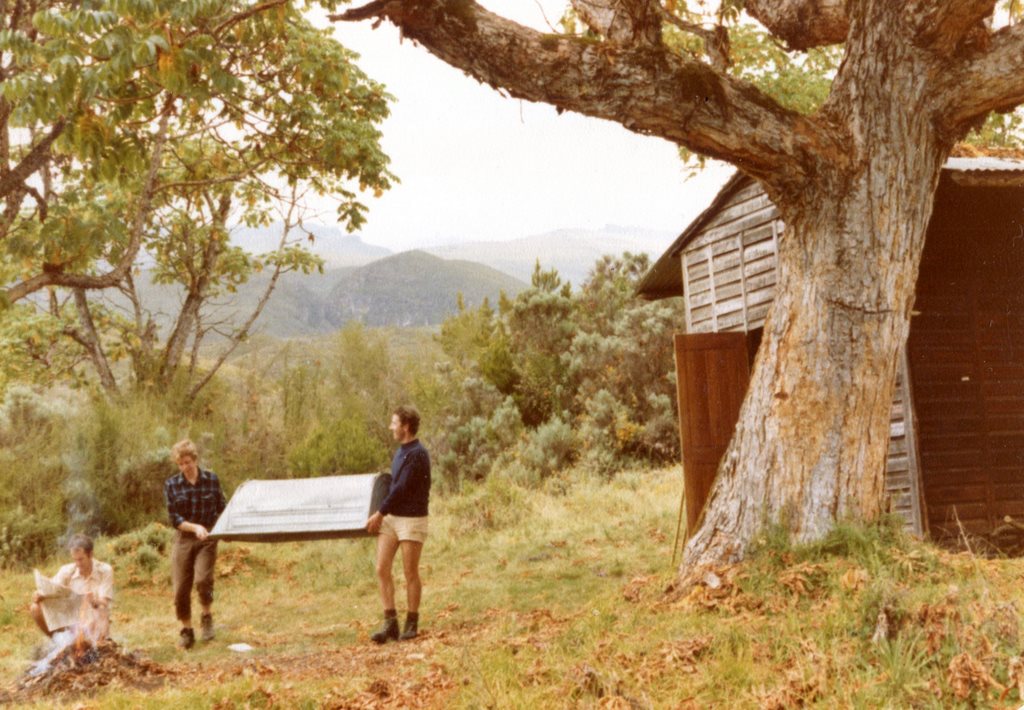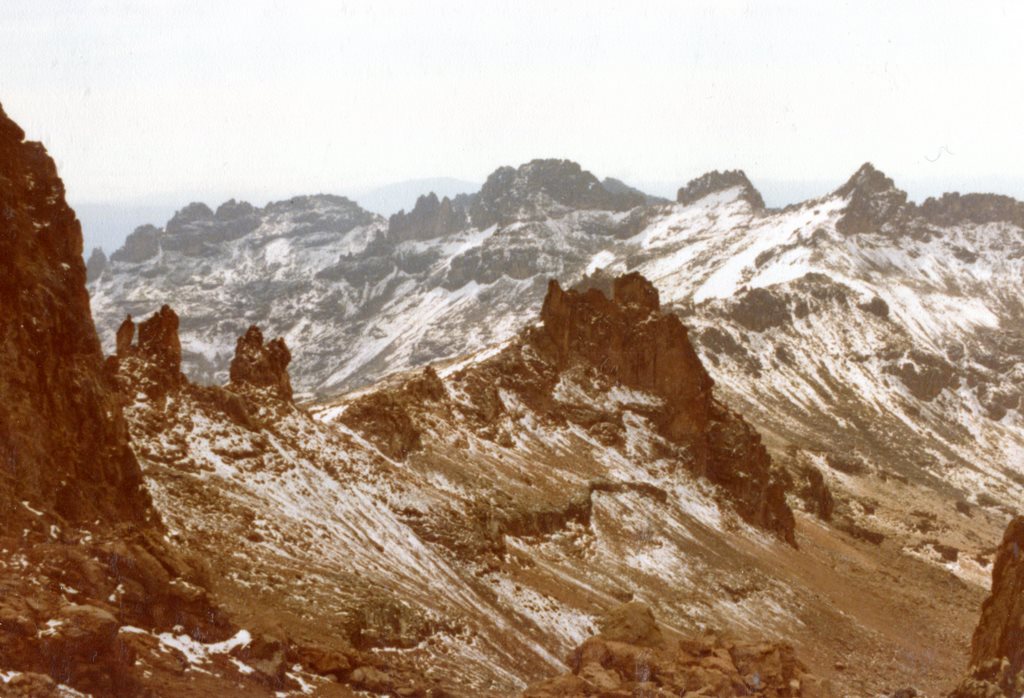Mount Kenya
Key information: Mount Kenya 
- Enjoy spectacular, ever-changing scenery as you climb to the dramatic summit of this ancient volcano, Kenya’s highest mountain, and many think more interesting (and certainly emptier) trekking than its more famous counterpart, Kilimanjaro.
- Climb through a range of ecosystems (forest to moorland to alpine to rock and ice) in this World Heritage Site.
- One of Walkopedia’s favourite walks.
Walkopedia rating
(Top 100)
- Walkopedia rating93
- Beauty36
- Natural interest19
- Human interest5
- Charisma36
- Negative points3
- Total rating93
- Note: Negs: Altitude
Vital Statistics
- Length: 4-7 days
- Maximum Altitude: 4,985m
- Level of Difficulty: Difficult
WALK SUMMARY
The highest mountain in Kenya (and second-highest in Africa) is a huge stand-alone extinct volcano, last active some 2.6 million years ago. Its mass is some 70km across, and its trekking peak is 4,985m, so it is a whopper in every sense. It is walking and climbing heaven. Walkopedia has yet to meet someone who has walked both it and Kilimanjaro and prefers the latter.
Mount Kenya is not just a single summit, but has eroded into a magnificent array of spire-peaks, with glaciers, numerous beautiful tarns and a selection of weird and wonderful formations all around. It is one of the few places near the equator in Africa with permanent glaciers, albeit shrinking – there are 6 or 7 of them (as at 2017 –how long until climate change reduces this number further?). Your first impression will be Mount Kenya’s great mass topped by its broken peaks soaring above the fertile foothills – or, just as likely, a cope of cloud from which occasional dark glimpses will appear.
The trekking summit, Point Lenena, sits slightly lower than the conjoined climbing peaks of Batian (5,199m) and Nelion. It commands exceptional views of the surrounding rocky drama – when cloud free: it is very important to get up there early, for the best chance of clear views: even better, catch the dawn, although this will mean a very early start.
The mountain is a majestic geological and ecological wonderland, with very diverse ecosystems and some unique flora. Low down it is tea, coffee and farmland, and dryish scrub. You start climbing on slopes swamped by mountain forest; higher up are thick swathes of bamboo, and even higher it is cloud forest with cedars and smaller trees often dripping moss. On the Chogoria Route, you meet beautiful tussocky grasslands mixed with stately stands of rosewood at the highest forest zone. You emerge at around 3,200m into dramatic high moorland, where the at times fantastical vegetation ranges from boggy plants (indeed a vertical bog) to giant and ostrich-plume lobelias, sencio (giant groundsels) and cabbage groundsel, with a huge array of vivid heathers nearly ubiquitous. It is here that you get a true feel for the mountain’s vastness, with ridges running relentlessly upward and expensive views across to sub-peaks and excrescences. Walkopedia believes that it is this area which gives Mount Kenya its unique allure and fascination: while its summit and highly volcanic upper regions are thrilling and magnificent, they have parallels elsewhere. Above the moorland is smaller but still varied alpine vegetation, then you are in bare rock and huge spires, with a sprinkling of tarns and a selection of glaciers and snowfields. Truly amazing.
Wildlife is abundant, more so than on Kili. Beware of and avoid surprising buffalo, which can be extremely dangerous, and elephants and the very occasional black rhino, which you can meet in the forests and moorland. Make a noise and keep back if you see them. Lions and leopards are occasionally on the lower slopes; servals are around but shy and nocturnal. Monkeys and baboons in the forests (watch your possessions). Rock hyrax. Eland, waterbuck, bushbuck and various types of antelope. You might see hyenas and jackals. There is a huge array of birdlife, including various eagles and other raptors, lammergeyers and vultures, and, in the woodlands, hornbills, orioles and turacos; several types of sunbird and various water birds around the streams and lakes.
It is no surprise that the area is a World Heritage Site.
Important rivers flow from Mount Kenya’s glaciers and rainforests. It has deep religious and spiritual importance to the tribes which live around it, and is the home of the Kikuyu god Ngai.
Routes: There are several outstanding routes, which all reach the Summit Circuit Path, a… er… circuit of the peak area. Walkers should take different routes up/down if they can, thus traversing the mountain and viewing different aspects of his most remarkable place.
All the main ascents treat you to an extraordinarily interesting selection of vegetation zones and landscapes as you ascend. They all start in thick forest, climb out of the treeline into unique moorland and alpine areas. Then it is the rocky drama of the peak area.
See William Makesy’s account of his crossing of the massif here.
For those intent on going full circle on Mount Kenya, the Summit Circuit Path is the only option. But you could build a partial circuit into your crossing of the massif.
The three main routes are described below. There are also the Burguret and the Timau routes, which are little used and hard to find.
_____________________________
The Chogoria route, from the east, is generally agreed to be the most beautiful approach, and Walkopedia concurs. It starts lower than the other routes, at 1,700m, and ascends to the Summit Circuit Path at the Austrian Hut at around 4,800m, which is substantially higher than the points where the other paths reach it, although this is done in 3 days rather than the 2 usually taken on the other routes. You sleep higher than on the other routes, if you stick to it all the way. (Note that you can turn north to Shipton’s Camp, which at 4,250m is quite a bit lower than the Austria Hut.)
While some claim that it is the best ascent route from the point of view of altitude, it therefore appears to be arguably a better descent route, as you get the beauty and interest with reduced altitude risk, especially if you do the other routes in 3 days rather than 2. Walkopedia descended it, making a huge first day to down to Nithi, then diverting to a nearby waterfall and walking on to the Meru Bandas. We walked down a bit of the track below the Bandas on Day 3, getting picked up to rush off for our flight home.
See our Chogoria page for details and photos. See William Makesy’s account here.
_____________________________
The Sirimon Route ascends from the north-west, to Shipton’s camp at around 4,200m, on the Summit Circuit Path. It used to be less used (partly because it is furthest from Nairobi), but Walkopedia saw far more people on it than on the Chogoria in 2017. This may be because more of the expedition companies are based in Nanyuki.
Walkopedia considers it the best route to ascend because of its relatively gradual altitude gain, to the relatively lower Shipton’s Camp, especially if you do it in 3 days via Liki North Hut rather than direct from Old Moses Hut to Shipton’s Camp.
See our Sirimon page for details and photos. See William Makesy’s account here.
_____________________________
The Naro Moru Trail from the west is said to be the most popular route with operators because the tourist hotels near the roadhead are best (and it is nearest Nairobi) and it ascends most quickly, which makes for speed and… er… profit.
The Naro Moru climbs in 2 days from 2,500m (at the park gate – you can drive in further, but better to start there for acclimatization purposes) to Mackinder’s Camp at around 4,200m, a bit below the Summit Circuit Path. With the usual first night at the Met station at 3,050m, you would climb over 1,000m (in 5-6 hrs) to Mackinder’s Camp the next day, which is likely to leave you feeling quite sorry for yourself, at the least.
The Naro Moru is claimed to be a bit less beautiful than the other main trails. With the treeline at around 3,200m, you spend the first and part of the second days in the beautiful and interesting forest. The moorland above is wet, and features a famous and self-explanatory area called the “vertical bog”.
See our Naro Moru page for details and photos.
_____________________________
Burguret Route: this is a little-used and in places obscure way up the mountain, starting from the west near Nanyuki and joining the Summit Circuit Path of Mackinder Camp.
_____________________________
Walkopedia would have loved to walk the Summit Circuit Path, if time had allowed. This marvellous route winds around the base of the great peaks, through fascinating vegetation and passing tarns, towers and weird features galore. It is said to be around 10km (but it will feel longer), one very long day for the very fit to get the whole way round, although it would be shame not to take 2 or 3 days to enjoy this amazing area, with lots of time for exploration and side walks. Realistically, unless you are descending the way you climbed (and a traverse of the massif is preferable if you can), the whole Summit Circuit Path is unlikely to be on the cards.
_____________________________
Altitude: Mount Kenya is very high and rises quickly, so it poses a classic risk of altitude misery or worse. The slower you ascend, the better chance you have of avoiding the worst. The Sirimon and Naro Moru routes ascend to the Summit Circuit Path at around 4,200m in 2 days, but climbing this fast will really increase the risk. You are well advised to take at least 3 days to get to the peak area. The Chogoria route takes 3 days but ends up substantially higher. It is a very good idea to get to the base area the day before and do an acclimatizing walk that afternoon. If you can, try to “walk high and sleep low”, ie make sure you have made an acclimatization walk above where you will sleep on the way up.
The best weather tends to be in the mornings, so start early!
Walkopedia’s expedition was organised by Tourdust, and we were absolutely delighted. Carefully selected and planned options, very efficient and nice to deal with. Now our partners, and highly recommended.
Have a look at the dreaded TripAdvisor: you may get good, current views on this area.
Please help us by making suggestions and sending photos! Thank you!
WILLIAM MACKESY'S ACCOUNT
of this walk
Day 1
So, we’re here at last: the Sirimon gate into the Mount Kenya National Park. Here at 2,650m, it is warm and gently breezy, sunny with a few clouds. Our group is cheerful and apparently thoroughly prepared, other than that I was up 5 times with the squits last night. Our guides, and the rest of our support team, seem competent and smiley, so all is looking good.
We stride off up the road at 1.30 – it is metalled all the way to our hut, which is a tad disappointing somehow, but makes for an easy climb. Elija, our leader, sets a deliberately.....
READ MOREOther accounts: share your experiences
Your comments on this walk, your experiences and suggestions, and your photos are very welcome. Where appropriate, you will be credited for your contribution.
We have a lot of helpful practical information and tips about this walk, covering everything from the best books and maps, to timing and weather, geting there, possible problems, whether you need a guide and where to find them, and useful websites. This section is only open to members.
Membership is FREE AND JOINING TAKES 30 SECONDS. To login or sign up click here
Safety and problems: All walks have inherent risks and potential problems, and many of the walks featured on this website involve significant risks, dangers and problems. Problems of any sort can arise on any walk. This website does not purport to identify any (or all) actual or potential risks, dangers and problems that may relate to any particular walk.
Any person who is considering undertaking this walk should do careful research and make their own assessment of the risks, dangers and possible problems involved. They should also go to “Important information” for further important information.
Anyone planning an expedition to this place should see further important information about this walk.
Safety and problems: All walks have inherent risks and potential problems, and many of the walks featured on this website involve significant risks, dangers and problems. Problems of any sort can arise on any walk. This website does not purport to identify any (or all) actual or potential risks, dangers and problems that may relate to any particular walk.
Any person who is considering undertaking this walk should do careful research and make their own assessment of the risks, dangers and possible problems involved. They should also go to “Important information” for further important information.
OTHER ACCOUNTS
share your experiences
Add your experiences, suggestions and photos. We would be delighted to receive your writing and ideas (which will be attributed appropriately where published).
Anyone planning an expedition to this place should see further important information about this walk.
Responsible travel matters, a lot. How you travel will make a real difference - for better or worse. PLEASE consider this when making plans. Read more



